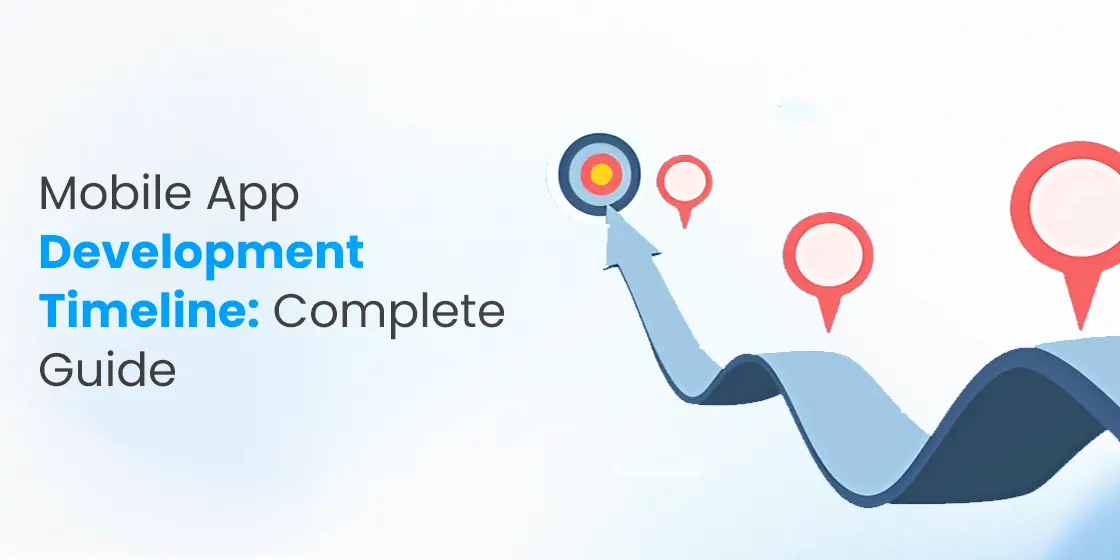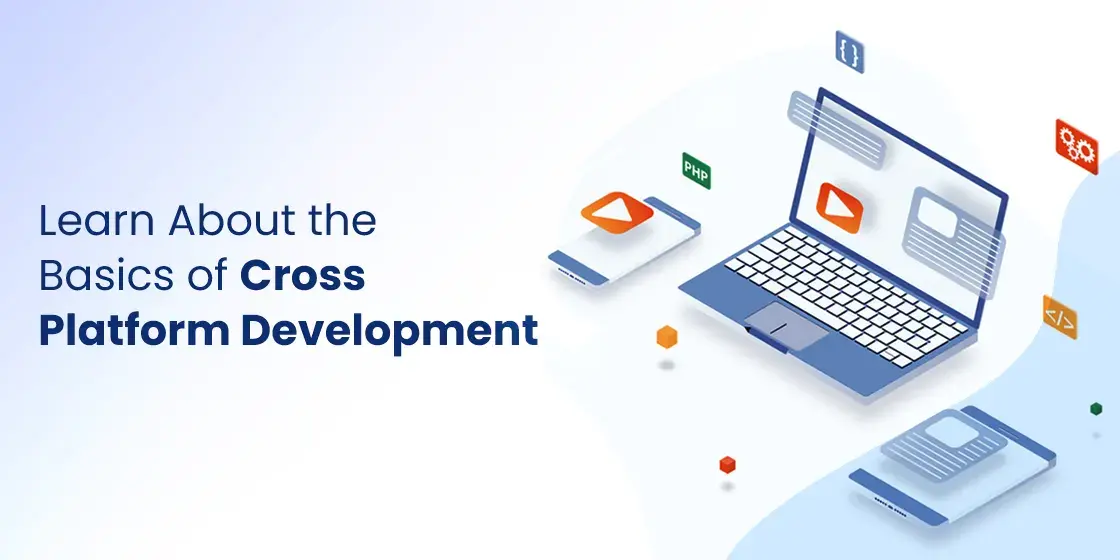Table of Content
Discover What a Successful Mobile App Development Timeline Looks Like Today
Planning a mobile app is exciting, but understanding the mobile app development timeline is crucial for setting realistic expectations and ensuring project success. Whether you’re an entrepreneur with a groundbreaking idea or a business looking to expand into mobile markets, knowing how long each phase takes can make the difference between a successful launch and costly delays.
The mobile app development timeline varies significantly based on factors like app complexity, platform choice, and team expertise. Simple apps might take 2-4 months to complete, while complex enterprise applications can require 6-12 months or more. Understanding these timeframes helps you plan resources, budget effectively, and communicate realistic expectations to stakeholders.
This comprehensive guide breaks down every phase of the mobile app development process, from initial concept validation to post-launch maintenance. By understanding each stage’s requirements and typical duration from a professional mobile app development perspective, you’ll be better equipped to navigate the development journey and make informed decisions to keep your project on track and within budget.
Mobile App Development Timeline – Understanding the Various Phases
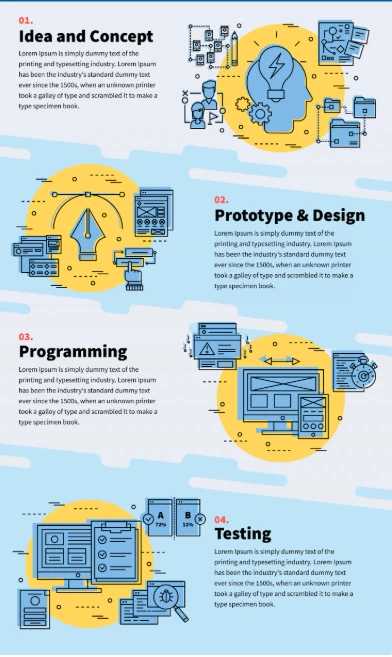
The mobile app development timeline consists of several interconnected phases that build upon each other to create a polished, market-ready product. Each phase serves a specific purpose and typically cannot be skipped without compromising the final product’s quality or user experience.
Modern app development follows a structured approach that includes discovery and planning, design and prototyping, development and coding, testing and quality assurance, deployment and launch, and ongoing maintenance. This systematic approach ensures that every aspect of the app is carefully considered, for example the various app design costs, and executed to meet both user needs and business objectives.
Understanding these phases helps project managers, developers, and stakeholders align expectations and allocate resources effectively. Each phase has its own timeline, deliverables, and success criteria that contribute to the overall mobile app development timeline and project success.
Phase 1: Discovery and Planning (2-4 Weeks)
The discovery and planning phase forms the foundation of any successful mobile app project and significantly impacts the overall mobile app development timeline. This phase involves validating the app concept, defining target audiences, analyzing competitors, and establishing clear project requirements and objectives.
During this phase, teams conduct market research to understand user needs, identify potential challenges, and define the app’s unique value proposition. This research includes analyzing similar apps, understanding user behavior patterns, and identifying market gaps that the new app can fill. The discovery process also involves defining technical requirements, selecting appropriate platforms, and establishing project scope and budget parameters.
Proper planning during this phase prevents costly changes later in the development process and ensures that all stakeholders have aligned expectations. Teams create detailed project roadmaps, establish timelines, define success metrics, and identify potential risks that could affect the mobile app development timeline. This upfront investment in planning typically saves significant time and resources throughout the development process.
Phase 2: Design and Prototyping (4-8 Weeks)
The design and prototyping phase transforms conceptual ideas into tangible visual representations of your mobile app ideas that guide the development process. This phase typically represents one of the most time-intensive portions of the mobile app development timeline, as it requires careful consideration of user experience, interface design, and visual aesthetics.
User experience (UX) design focuses on creating intuitive user flows, information architecture, and interaction patterns that make the app easy and enjoyable to use. This involves creating wireframes, user journey maps, and prototypes that demonstrate how users will navigate through the app and accomplish their goals. UX designers conduct user research, create personas, and test various design approaches to ensure optimal usability.
User interface (UI) design brings the UX concepts to life through visual elements, color schemes, typography, and interactive components. UI designers create detailed mockups, style guides, and asset libraries that developers will use during the coding phase. This phase also includes creating responsive designs that work effectively across different screen sizes and devices, which is crucial for ensuring consistent user experiences across platforms.
Turn your concepts into mobile apps brimming with advanced features. From inception to deployment, make a distinct impact in the market.
Contact Now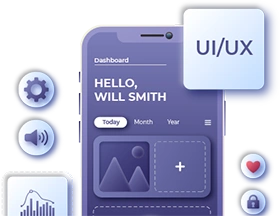
Phase 3: Development and Coding (6-16 Weeks)
The development and coding phase represents the core of the mobile app development timeline, where designs and prototypes transform into functional software. This phase involves frontend development, backend development, and integration of various components to create a cohesive application that meets all specified requirements.
Frontend development focuses on implementing the user interface and user experience elements that users directly interact with. Developers write code for screens, navigation, animations, and interactive elements using platform-specific programming languages and frameworks. This work includes implementing responsive design principles, optimizing performance, and ensuring compatibility across different devices and operating system versions.
Backend development involves creating server-side infrastructure, databases, APIs, and security systems that support the app’s functionality. This includes setting up data storage solutions, implementing user authentication systems, creating API endpoints, and establishing security protocols. The complexity of backend development varies significantly based on the app’s features and can substantially impact the overall mobile app development timeline.
Phase 4: Testing and Quality Assurance (2-6 Weeks)
The testing and quality assurance phase ensures that the functions correctly across various devices, operating systems, and usage scenarios. This critical phase of the mobile app development timeline involves multiple types of testing designed to identify and resolve issues before the app reaches end users, especially or large enterprise mobile app ideas.
Functional testing verifies that all features work as intended and meet the requirements defined during the planning phase. This includes testing user interactions, data processing, navigation flows, and integration points between different app components. Testers systematically work through every feature and user pathway to identify bugs, usability issues, and performance problems.
Performance testing evaluates the app’s speed, responsiveness, and resource usage under various conditions. This includes testing load times, memory usage, battery consumption, and network performance. Security testing ensures that user data is protected and that the app follows best practices for data privacy and protection. The duration of this phase depends on the app’s complexity and the number of issues discovered during testing.
Phase 5: Deployment and Launch (1-4 Weeks)
The deployment and launch phase marks the transition from development to market availability, representing a crucial milestone in the mobile app development timeline. This phase involves preparing the app for distribution through app stores, setting up analytics and monitoring systems, and executing marketing strategies to drive initial user adoption.
App store submission requires preparing detailed app descriptions, screenshots, privacy policies, and other metadata required by Apple App Store and Google Play Store. The review process can take anywhere from a few days to several weeks, depending on the app’s complexity and compliance with store guidelines. During this time, teams often prepare marketing materials, press releases, and user acquisition campaigns.
Pre-launch activities include setting up crash reporting systems, analytics platforms, and customer support processes to handle user inquiries and issues. Teams also prepare for post-launch monitoring to track app performance, user behavior, and identify any issues that may arise after the app becomes publicly available. This preparation is essential for maintaining app quality and user satisfaction throughout the launch period.
Factors Affecting Mobile App Development Timeline
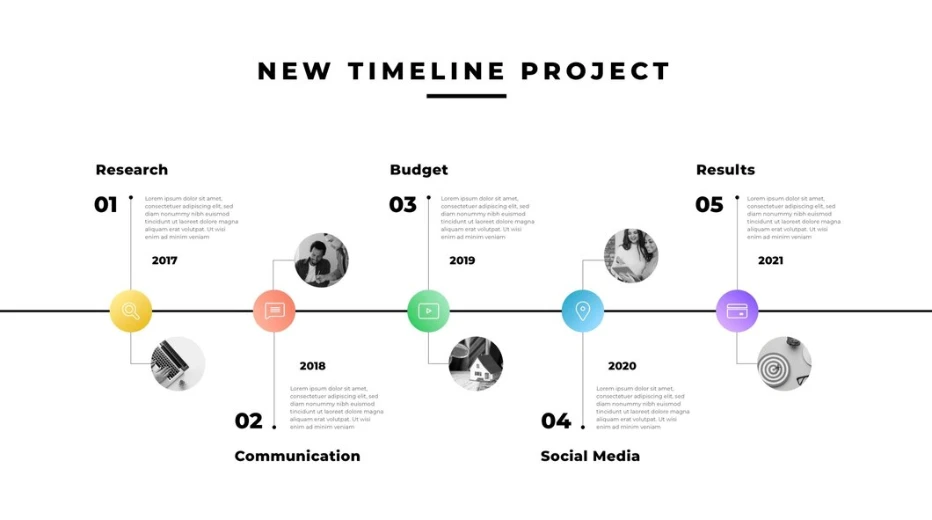
Several key factors significantly influence the mobile app development timeline, and understanding these variables helps project managers create more accurate estimates and manage stakeholder expectations effectively.
- App complexity represents the most significant factor, as simple apps with basic functionality require substantially less time than complex applications with advanced features.
- Platform selection dramatically impacts development time, with native iOS and Android apps typically requiring separate development efforts that can extend the timeline by 60-80%. Cross-platform frameworks like React Native and Flutter can reduce development time but may require additional optimization to achieve native-level performance and UX.
- Team size and expertise play crucial roles in determining the mobile app development timeline. Experienced development teams can work more efficiently and avoid common delay pitfalls. However, larger teams don’t always work faster, as coordination and communication challenges can often slow progress.
Simple vs. Complex App Development Timelines
Simple mobile apps typically feature basic functionality, minimal user interfaces, and straightforward data handling requirements. These apps usually take 2-4 months to complete and include applications like calculators, note-taking apps, or simple productivity tools. The mobile app development timeline for simple apps is relatively predictable because they involve standard platform features and established development patterns.
Medium-complexity apps incorporate custom backend systems, third-party integrations, and more sophisticated user interfaces. These applications typically require 4-6 months of development time and include social media apps, e-commerce platforms, and content management systems. The timeline for medium-complexity apps depends heavily on the number of integrations and custom features required.
Complex mobile apps feature advanced functionality like real-time data processing, artificial intelligence, augmented reality, or complex business logic. These applications often require 6-12 months or more to complete and include enterprise software, fintech applications, and advanced gaming platforms. The mobile app development timeline for complex apps is less predictable due to the innovative nature of features and potential technical challenges.
Platform-Specific Timeline Considerations
iOS app development typically follows a more streamlined timeline due to Apple’s standardized hardware ecosystem and development tools. The homogeneous nature of iOS devices means developers can focus on fewer device variations, potentially reducing testing time and complexity. However, Apple’s strict App Store review process can add additional time to the deployment phase.
Android app development often requires more time due to the diverse ecosystem of devices, screen sizes, and Android versions that must be supported. The fragmentation of the Android market means developers must test across numerous device configurations and Android versions, which can extend the testing phase of the mobile app development timeline.
Cross-platform development using frameworks like React Native, Flutter, or Xamarin can potentially reduce the overall timeline by allowing developers to write code once and deploy to multiple platforms. However, platform-specific optimizations and native feature integrations may still require additional time and expertise to implement effectively.
Team Size and Expertise Impact
The size and composition of the development team significantly influence the mobile app development timeline. Small teams of 2-4 developers can be highly efficient for simple to medium-complexity apps, as they have fewer communication overhead and can make decisions quickly. However, small teams may lack specialized expertise in areas like backend development, UI/UX design, or specific technologies.
Larger teams of 5-10 or more developers can handle complex projects with multiple parallel workstreams, potentially accelerating development for sophisticated applications. However, larger teams require more coordination, communication, and project management overhead, which can sometimes slow progress if not managed effectively.
The expertise and experience level of team members plays a crucial role in determining the mobile app development timeline. Experienced developers familiar with the chosen technologies and platforms can work more efficiently, make better architectural decisions, and avoid common pitfalls that lead to delays and rework.
Common Timeline Challenges and Solutions
Scope creep represents one of the most common challenges affecting mobile app development timelines. When stakeholders continuously add new features or modify requirements during development, it can significantly extend the project timeline and increase costs. Implementing change control processes and maintaining clear communication about scope changes helps manage this challenge.
Technical challenges and unexpected integration issues can cause delays in the mobile app development timeline. These issues are often difficult to predict during planning but can be mitigated through thorough technical research, proof-of-concept development, and building buffer time into project schedules.
Resource constraints, including developer availability, budget limitations, and third-party dependencies, can impact project timelines. Proper resource planning, maintaining relationships with reliable vendors, and having contingency plans help address these challenges when they arise.
Strategies to Accelerate Development in Mobile App Development Timeline
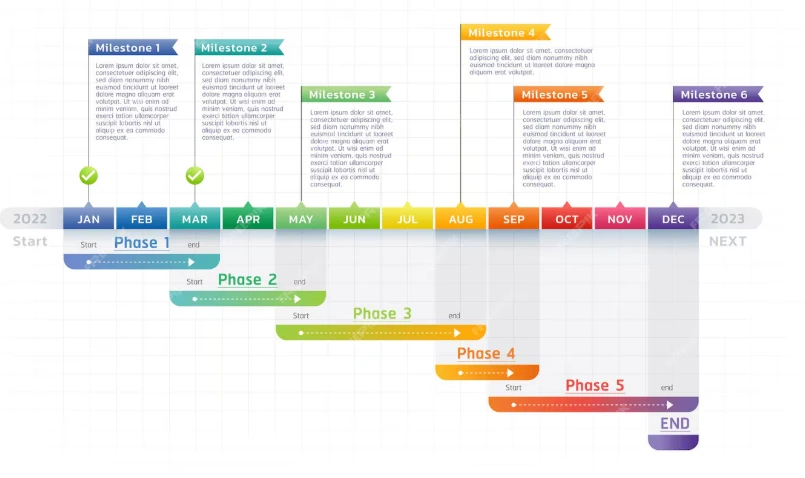
Adopting agile development methodologies can help accelerate the mobile app development timeline by enabling iterative development, faster feedback cycles, and early problem identification. Agile approaches allow teams to deliver working software incrementally and adjust priorities based on user feedback and changing requirements.
Utilizing pre-built components, templates, and third-party services can significantly reduce development time. Rather than building everything from scratch, teams can leverage existing solutions for common functionality like user authentication, payment processing, and analytics. This approach allows developers to focus on core features that differentiate the app.
Implementing automated testing and continuous integration practices can streamline the mobile app development timeline by catching issues early and reducing manual testing overhead. Automated testing ensures consistent quality while allowing developers to identify and fix problems quickly throughout the development process.
Budget and Timeline Relationship
The mobile app development timeline has a direct relationship with project budget, as longer development periods typically require more resources and higher costs. Understanding this relationship helps stakeholders make informed decisions about feature prioritization, resource allocation, and launch timing.
Rushing development to meet aggressive timelines often leads to higher costs due to the need for additional resources, overtime work, and potential quality issues that require expensive fixes later. Conversely, extending timelines unnecessarily can increase costs through prolonged resource utilization and delayed market entry.
Balancing timeline and budget constraints requires careful planning, realistic expectations, and ongoing communication between all stakeholders. Successful projects often involve trade-offs between features, timeline, and budget that align with business objectives and market opportunities.
Quality Assurance and Testing Timelines
Quality assurance and testing represent critical components of the mobile app development timeline that cannot be compressed without significant risks to app quality and user satisfaction. Proper testing requires systematic evaluation of functionality, performance, security, and user experience across multiple devices and scenarios.
Automated testing can help accelerate the testing phase by running repetitive tests quickly and consistently. However, manual testing remains essential for evaluating user experience, edge cases, and complex user scenarios that automated tests might miss. The balance between automated and manual testing depends on the app’s complexity and risk tolerance.
Beta testing with real users provides valuable feedback but requires additional time in the mobile app development timeline. Beta testing helps identify usability issues, performance problems, and feature gaps that internal testing might miss. Planning for beta testing early in the project helps ensure adequate time for incorporating feedback before launch.
Post-Launch Maintenance and Updates
The mobile app development timeline extends beyond initial launch to include ongoing maintenance, updates, and feature enhancements. Post-launch activities typically consume 15-20% of the original development effort annually and are essential for maintaining app relevance and user satisfaction.
Regular updates address security vulnerabilities, fix bugs, and add new features based on user feedback and market changes. The frequency and scope of updates depend on the app’s complexity, user base, and competitive landscape. Planning for post-launch activities during initial development helps ensure adequate resources and processes are in place.
Monitoring app performance, user behavior, and feedback provides valuable insights for future development priorities. Analytics platforms, crash reporting systems, and user feedback mechanisms help teams identify areas for improvement and guide future development efforts.
Frequently Asked Questions
| How long does it take to develop a mobile app from start to finish? The mobile app development timeline typically ranges from 2-4 months for simple apps, 4-6 months for medium-complexity apps, and 6-12 months or more for complex applications. The exact timeline depends on factors like app complexity, platform choice (iOS, Android, or both), team size and expertise, and the specific features required. Simple apps with basic functionality move faster through development, while complex apps with advanced features like AI integration or real-time processing require more time. |
| What factors most significantly impact the mobile app development timeline? The most significant factors affecting development timelines include app complexity and feature set, platform selection (native vs. cross-platform), team size and expertise, third-party integrations, and design complexity. Complex apps with advanced features require more development time, while choosing cross-platform frameworks can reduce timeline compared to building separate native apps. Experienced development teams work more efficiently and encounter fewer delays than less experienced teams. |
| Can I speed up the mobile app development timeline without compromising quality? Yes, you can accelerate development while maintaining quality by focusing on core features first (MVP approach), using cross-platform frameworks like React Native or Flutter, leveraging pre-built components and APIs, implementing automated testing, and adopting agile development methodologies. Starting with essential features and adding enhancements in subsequent updates allows for faster initial launch while maintaining quality standards. |
| How does choosing between iOS and Android affect the development timeline? Developing for a single platform (iOS or Android) typically takes less time than creating separate native apps for both platforms. Building for both platforms can extend the timeline by 60-80% compared to single-platform development. However, using cross-platform frameworks can reduce this timeline extension while still providing access to both platforms. Consider starting with one platform to validate your concept faster. |
| What happens if my mobile app development timeline gets delayed? Timeline delays can result from scope changes, technical challenges, resource constraints, or underestimated complexity. To manage delays, maintain open communication with stakeholders, reassess priorities and scope, consider adding resources if budget allows, and implement change control processes. Building buffer time into initial estimates and using agile methodologies can help accommodate unexpected challenges while minimizing impact on launch dates. |
Conclusion
Understanding the mobile app development timeline is essential for successful project planning and execution. The timeline varies significantly based on app complexity, platform choice, team expertise, and development methodology, ranging from 2-4 months for simple apps to 6-12 months or more for complex applications.
Proper planning, realistic expectations, and effective project management are crucial for delivering apps on time and within budget. By understanding each phase of development and the factors that influence timeline, stakeholders can make informed decisions that balance feature requirements, quality standards, and market timing.
The mobile app development timeline should be viewed as an investment in creating a product that meets user needs and achieves business objectives. While it’s tempting to rush development to reach market quickly, taking the time to properly plan, design, develop, and test an app typically results in better outcomes and long-term success.
Empower your digital initiatives with BariTechSol, a premier custom software development company. Our skilled team tailors cutting-edge solutions to your unique needs. Elevate your tech experience and stay ahead in the digital realm. Partner with BaritechSol and code the success of your next big idea.
